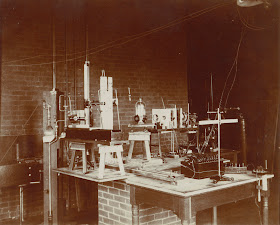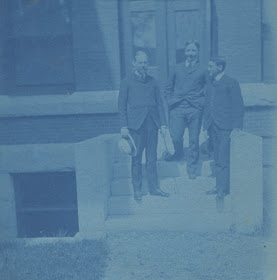 Ever think that you can feel the sun's rays beating down? While that impression may be illusory, visible light and all forms of electromagnetic radiation actually do exert pressure on a surface.
Ever think that you can feel the sun's rays beating down? While that impression may be illusory, visible light and all forms of electromagnetic radiation actually do exert pressure on a surface.First predicted by James Maxwell in 1871, experimental evidence for the phenomenon wasn't produced until the turn of the century. The Russian physicist Peter Lebedev was the first to measure this radiation pressure and announced his findings in 1900 at a conference in Paris. The measurement was independently confirmed by two Dartmouth researchers in 1901 - Gordon Ferrie Hull and Ernest Fox Nichols (later President of the College, 1909-1916). Pictured here is the apparatus used by Hull and Nichols in their experiment, including the Nichols radiometer, which is now in the Smithsonian.
Hull and Nichols were apparently unaware of Lebedev's findings until after their discovery which they first published in an article titled "A Preliminary Communication on the Pressure of Heat and Light Radiation" in the November 1901 issue of The Physical Review (conclusive evidence was published in The Physical Review in July of 1903). In a later article in The Astrophysical Journal, they wrote that "Unfortunately the proceedings of the Paris Congress did not reach the writers, nor any intimation of the methods or results of Professor Lebedew's work, until after the publication of their own preliminary experiments."
 |
| Left to Right: E.F. Nichols, J.A. Brown, G.F. Hull, 1903 |
To read more about radiation pressure, ask for the Hull Papers (ML-47). A guide to the collection is available.
No comments:
Post a Comment